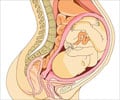- Stress is a significant factor in the mental health burden and a substantial contributor to increased suicide risk among women of reproductive age
- There is a need for better suicide prevention strategies, and this study adds data to the ethical debate over abortion access //
Association Between State-Level Access to Reproductive Care and Suicide Rates Among Women of Reproductive Age in the United States
Go to source).
Stress as a Contributing Factor
“Stress is a big contributor to mental health burden and a major driver of increased suicide risk,” says child-adolescent psychiatrist and neuroscientist Barzilay. “We discovered that this particular stressor—abortion restrictions—affects women of a specific age with a specific cause of death, which is suicide. That’s the bird’s-eye view.” The study came about after Barzilay, Zandberg, and Waller recognized an overlap in their research interests. Zandberg investigates how reproductive care limits affect gender inequity, while Barzilay investigates the elements that influence a person’s mental health trajectory and suicide risk. Waller is interested in environmental stressors that affect parents and, as a result, child development. Elina Visoki, a data scientist in Barzilay’s lab, also contributed to this study.They used state-level data from 1974 to 2016 to conduct a difference-in-differences study, which covered the full population of adult women during that period. “We created three indices that look at the enforcement of state-level legislation to measure access to reproductive care,” Zandberg explains. “Every time a state-enforced a reproductive care statute, we entered it into the index.” The researchers then compared suicide rates among women of reproductive age before and after the laws went into force, comparing them to national suicide trends and rates in places without such limitations.
“In comparison, women who were subjected to the shock of this type of restrictive law had a considerable increase in the suicide rate,” Zandberg says. The researchers then investigated if the discovery was unique to women of reproductive age or if it might be detected in other populations. In comparison, they performed the same research on all women aged 45 to 64 between 1974 and 2016. They discovered no effect. Finally, they looked at another prevalent cause of mortality, motor vehicle fatalities, and found no difference. Controlling for potential factors such as the economy and political atmosphere did not affect the findings.
Though the findings do not establish that restricting abortion access increased suicide rates, the researchers claim that the analytic methodology is one of the most rigorous methods for enabling causal inference. “This organization is strong—and it has nothing to do with politics,” says Barzilay. “It’s all supported by the data.” These conclusions have limitations, including the fact that the researchers did not have access to data on individual women’s experiences or mental health. In other words, “we’re looking at the connection between summary data about causes of mortality at the state level and policy and politics over many decades. “However, each death reflects a unique tragedy,” Waller argues. “There’s a lot more we need to learn about what these findings signify for individual suicide risk.”
Despite these limitations, the researchers believe the findings have clinical, policy, and ethical consequences. Recognizing this link, for example, can alter how physicians and other healthcare providers assess suicide risk in women of reproductive age. Aside from that, it highlights the need for improved suicide prevention measures and contributes facts to the ethical debate over abortion availability.
Reference:
- Association Between State-Level Access to Reproductive Care and Suicide Rates Among Women of Reproductive Age in the United States - (https://jamanetwork.com/journals/jamapsychiatry/article-abstract/2799597?widget=personalizedcontent&previousarticle=2799598)













